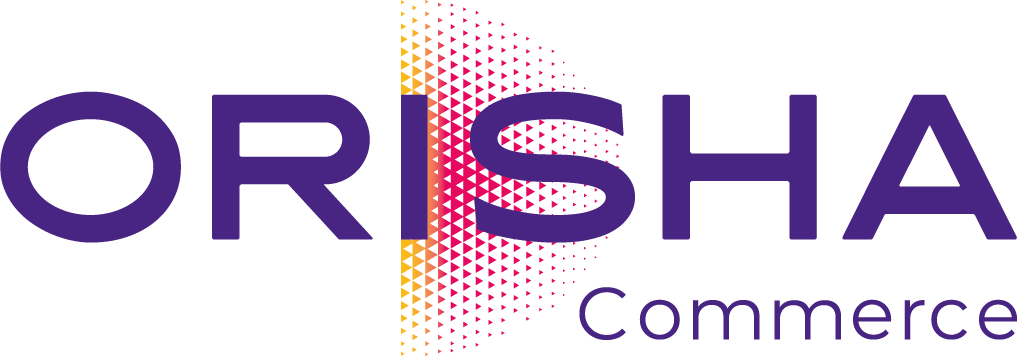How the Internet of Things is transforming the customer experience in retail

The retail sector is embracing the Internet of Things (IoT), transforming traditional operations and enabling enhanced customer insights through intelligent marketing data analysis. Innovations such as predictive inventory management and virtual fitting rooms are not only redefining the in-store experience but also providing brands with unique opportunities for differentiation.
Transforming the customer experience with the Internet of Things (IoT)
Defining the Internet of Things in retail
IoT in retail involves integrating sensors, connected devices, and intelligent systems into physical points of sale to optimize customer experiences and improve operational efficiency.
This network of connected objects—including Bluetooth beacons, RFID tags, and smart shelves—collects, analyzes, and transmits data in real-time.
This concept, also called u-commerce, represents a strategic use of IoT to enhance commercial operations.
Benefits for the consumer
By using connected devices, retailers can revolutionize the in-store consumer experience by smoothing out customer journey irritations and fostering loyalty through data collection.
Real-time product availability displays and stock-out alternatives ensure instant access to information. Additionally, promotions can be directly sent to customers’ smartphones, enhancing the shopping experience.
Impact on loyalty and brand reputation
IoT empowers retailers to stand out and cultivate enduring relationships with their customers. By delivering detailed, real-time product information (including origin, availability, and usage tips), retailers can enhance consumer trust. Furthermore, IoT-enabled tracking improves return management and overall service efficiency.
Integrating innovative technologies in-store
Connected devices for the point of sale
Incorporating connected devices and systems at points of sale enables retailers to innovate and gather valuable data concurrently. Key IoT technologies in store networks include :
- bluetooth beacons for personalized notifications and in-store navigation;
- motion sensors to gather consumer behavior data and identify high-traffic areas for optimal product placement;
- self-checkout systems utilizing RFID and smart cameras for expedited transactions;
- smart shelves displaying interactive product information and complementary purchase suggestions;
- smart mirrors, which use augmented reality for virtual try-on and personalized recommendations
IoT sensors and systems are not limited to collecting and analyzing marketing data. They can also optimize in-store energy consumption, thereby reducing the company’s energy bill.
Real-time data analysis solutions
IoT generates substantial amounts of data, with various tools available for analysis.
IoT platforms centralize this data and extract valuable insights, while Artificial Intelligence and Machine Learning enhance demand forecasting and inventory optimization based on consumption trends. Business Intelligence tools provide real-time visualization of sales, traffic, and inventory data, enabling swift decision-making.
Using smart sensors to optimize inventory
The Internet of Things ensures better visibility across the entire supply chain. RFID tags allow for instant identification and location of hundreds of items, significantly reducing the time spent on manual inventories. Smart shelves, in turn, detect stock variations and facilitate real-time replenishment.
Thanks to these technologies, retailers benefit from an automated and continuously updated inventory. Manual scans are no longer necessary: each product is continuously tracked with precise lifecycle information, reducing human errors and inventory discrepancies.
Orisha played a crucial role for Decathlon in integrating RFID technology. This collaboration enabled more accurate inventory management. In-store, RFID tags facilitated inventory counts, while in warehouses, they accelerated merchandise processing. This technology also allowed Decathlon to introduce mobile payments and self-checkout systems in its store network.
Creating a seamless and immersive journey
Engagement strategies via mobile apps
Mobile apps are becoming increasingly crucial to the customer experience, with over 55% of consumers using in-store app functionalities during their visits, according to a recent study. By integrating mobile apps with IoT systems, retailers create an interactive journey that boosts engagement.
Through geolocation, they can send in-store notifications, offers, and personalized communications, while consumers can scan product labels and QR codes for detailed information, including origin, reviews, and complementary items.
Mobile payments further streamline the purchase process, eliminating the need for traditional checkouts as customers can autonomously scan and pay via the app. Orisha Commerce offers an advanced checkout solution to reduce wait times—explore Openbravo SCO for a more efficient checkout experience.
Examples of interactive and personalized shopping
The IKEA Place app enables users to virtually visualize furniture in their homes through augmented reality, simplifying decision-making by offering a realistic preview of the product in their space.
Similarly, Sephora’s Virtual Artist tool on its mobile app uses augmented reality to let customers try on makeup virtually, facilitating confident product selection before purchase.
The role of augmented reality in the shopping experience
Augmented reality allows consumers to visualize items within their actual environment or try products remotely, enhancing decision-making and reducing returns. Beyond providing product information, augmented reality offers gamification possibilities. For example, Google Shopping integrates augmented reality features to enrich the online shopping experience, enabling users to try on makeup virtually, visualize items in 3D, and receive personalized recommendations.
Anticipating the challenges and opportunities of connected retail
Challenges in implementing IoT
Despite the promising opportunities IoT systems offer, their implementation presents several challenges. The initial investment can be substantial, with ongoing maintenance and upgrade costs. Additionally, many retailers still operate on legacy systems that lack data centralization capabilities, making IoT integration difficult and requiring technology interoperability.
IoT devices generate vast amounts of data requiring advanced analysis tools. Orisha Commerce’s unified commerce platform provides a state-of-the-art, fully interoperable solution designed to easily integrate with existing systems for efficient IoT data centralization and utilization.
While IoT is already extensively adopted in the industrial sector for process optimization, retail now faces the challenge of digital transformation.
Future trends and market developments
The Internet of Things market is rapidly expanding and is projected to experience significant growth in the coming years, with its size anticipated to reach 1 trillion by 2025 and 1.560 trillion by 2029. This growth is fueled by the convergence of IoT and artificial intelligence, creating AIoT (Artificial Intelligence of Things), which enhances predictive analysis capabilities. As IoT systems develop, so do cybersecurity concerns, leading to the expected growth of the IoT security market as retailers need to invest in robust security measures to safeguard their sensitive data.
Recommendations for an effective strategy
To fully leverage IoT systems in your store network, start by identifying the challenges to address and defining your performance indicators. Select the technologies that best match your needs:
- Smart sensors and RFID for efficient inventory management;
- Mobile apps and interactive kiosks to deliver personalized services;
- Cloud platforms and artificial intelligence to analyze collected data.
Integrate IoT with your sales channels, synchronizing data via a unified commerce platform. A practical approach would be to test IoT in a limited number of stores before expanding deployment widely.
IoT enhances customer experience by making it smoother and more personalized. With sensors, RFID tags, and connected devices, retailers can optimize inventory management and improve customer satisfaction.
Integrating IoT into an omnichannel strategy allows retailers to meet contemporary consumer expectations while distinguishing themselves with unique, interactive experiences.
Frequently asked questions
What is customer experience (CX)?
Customer experience (CX) refers to all interactions and emotions felt by a customer throughout their journey, from discovery to purchase and after-sales service. It can be enhanced by quality customer service, a unified store network, and the implementation of IoT and smart devices within store networks.
How does IoT improve the retail experience?
IoT makes the shopping journey smoother, personalized, and interactive. Thanks to various connected devices and objects (sensors, RFID tags, connected kiosks), it enables optimized inventory management and frictionless payments.
What digital innovations are revolutionizing the retail sector?
Here are some digital innovations revolutionizing store networks: the Internet of Things, IoT devices, artificial intelligence, augmented and virtual reality, contactless and mobile payments, and real-time data analysis.
How does an IoT device work?
An IoT device integrates sensors, software, and other technologies to collect and exchange data via the Internet. These smart objects can monitor their environment, send information to other devices or systems, and receive instructions for performing specific actions. This interconnection allows intelligent and automated process management.
How does IoT improve in-store services?
IoT relies on a network of connected objects that interact to optimize the customer experience. Thanks to this network of smart sensors, retailers can offer personalized services, such as instant recommendations or notifications based on customer location. This connected network also improves inventory management and ensures seamless service through collected data. Finally, by automating payments and reducing checkout wait times, IoT enhances the quality of in-store service.





